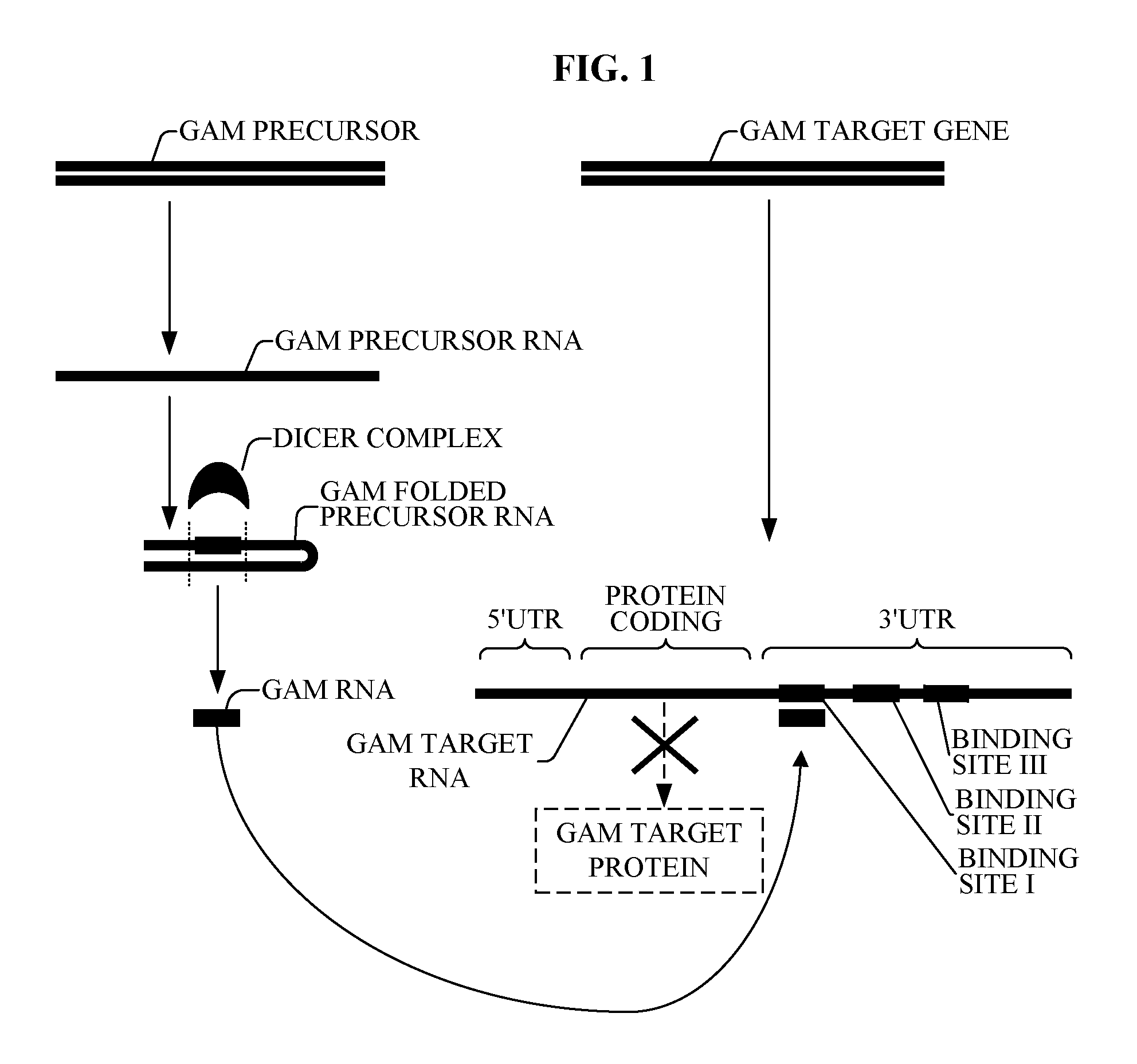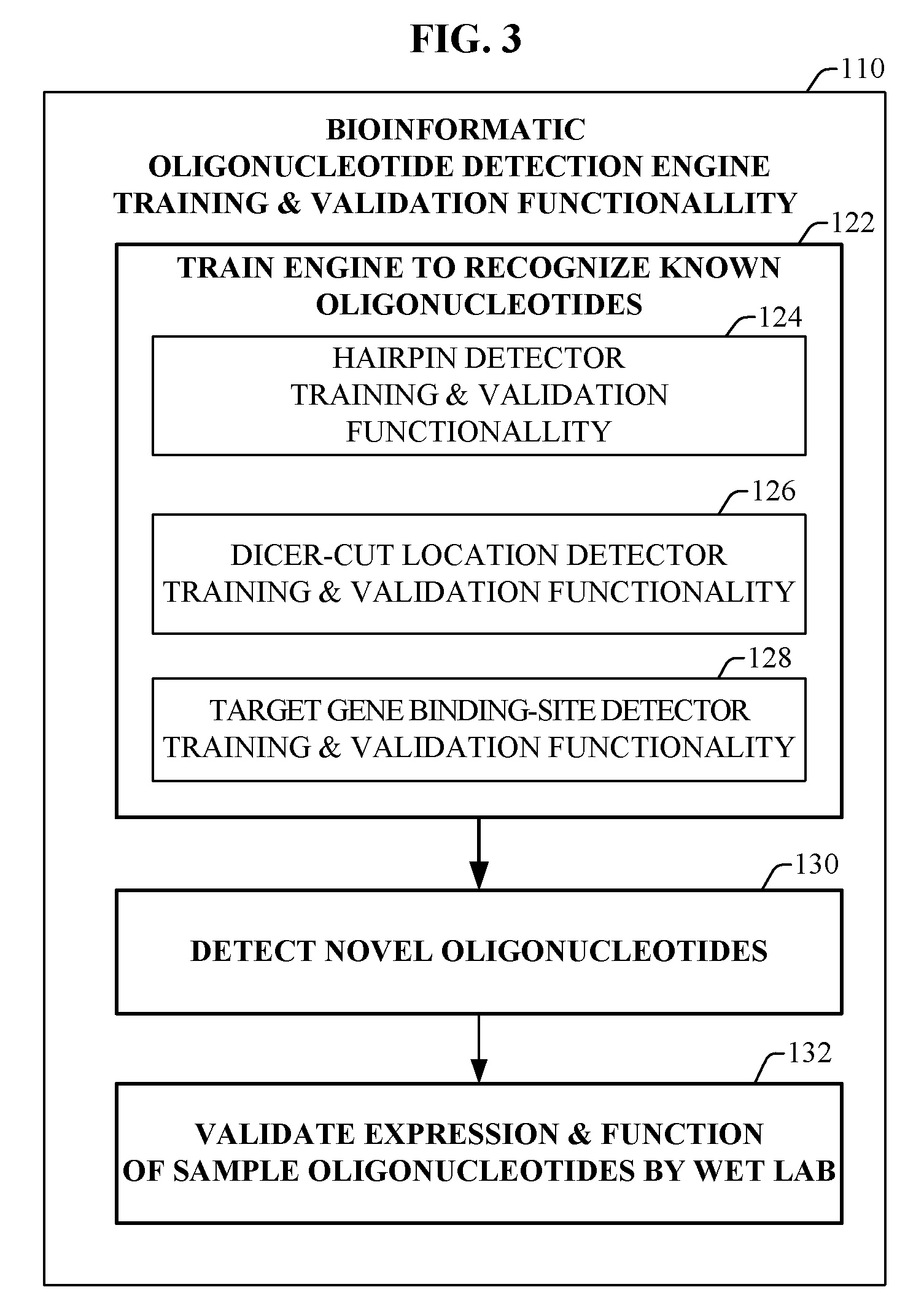Bioinformatically detectable group of novel regulatory viral and viral associated oligonucleotides and uses thereof
a novel regulatory viral and bioinformatically detectable technology, applied in the field of bioinformatically detectable novel viral oligonucleotides, can solve the problems of limited ability to detect novel mirna oligonucleotides and insufficient production of rna to be detected, so as to prevent and treat viral diseases
- Summary
- Abstract
- Description
- Claims
- Application Information
AI Technical Summary
Benefits of technology
Problems solved by technology
Method used
Image
Examples
Embodiment Construction
[0201]Reference is now made to FIG. 1, which is a simplified diagram describing a plurality of novel, bioinformatically-detected oligonucleotide of the present invention referred to here as the Genomic Address Messenger (GAM) oligonucleotide, which modulates expression of respective target genes whose function and utility are known in the art.
[0202]GAM is a novel, bioinformatically detectable, regulatory, non-protein-coding, miRNA-like oligonucleotide. The method by which GAM is detected is described with additional reference to FIGS. 1-8.
[0203]The GAM PRECURSOR is preferably encoded by a viral genome. Alternatively or additionally, the GAM PRECURSOR is encoded by the human genome. The GAM TARGET GENE is a gene encoded by the human genome. Alternatively or additionally, the GAM TARGET GENE is a gene encoded by a viral genome.
[0204]The GAM PRECURSOR encodes a GAM PRECURSOR RNA. Similar to other miRNA oligonucleotides, the GAM PRECURSOR RNA does not encode a protein.
[0205]GAM PRECURSO...
PUM
 Login to View More
Login to View More Abstract
Description
Claims
Application Information
 Login to View More
Login to View More - R&D
- Intellectual Property
- Life Sciences
- Materials
- Tech Scout
- Unparalleled Data Quality
- Higher Quality Content
- 60% Fewer Hallucinations
Browse by: Latest US Patents, China's latest patents, Technical Efficacy Thesaurus, Application Domain, Technology Topic, Popular Technical Reports.
© 2025 PatSnap. All rights reserved.Legal|Privacy policy|Modern Slavery Act Transparency Statement|Sitemap|About US| Contact US: help@patsnap.com



